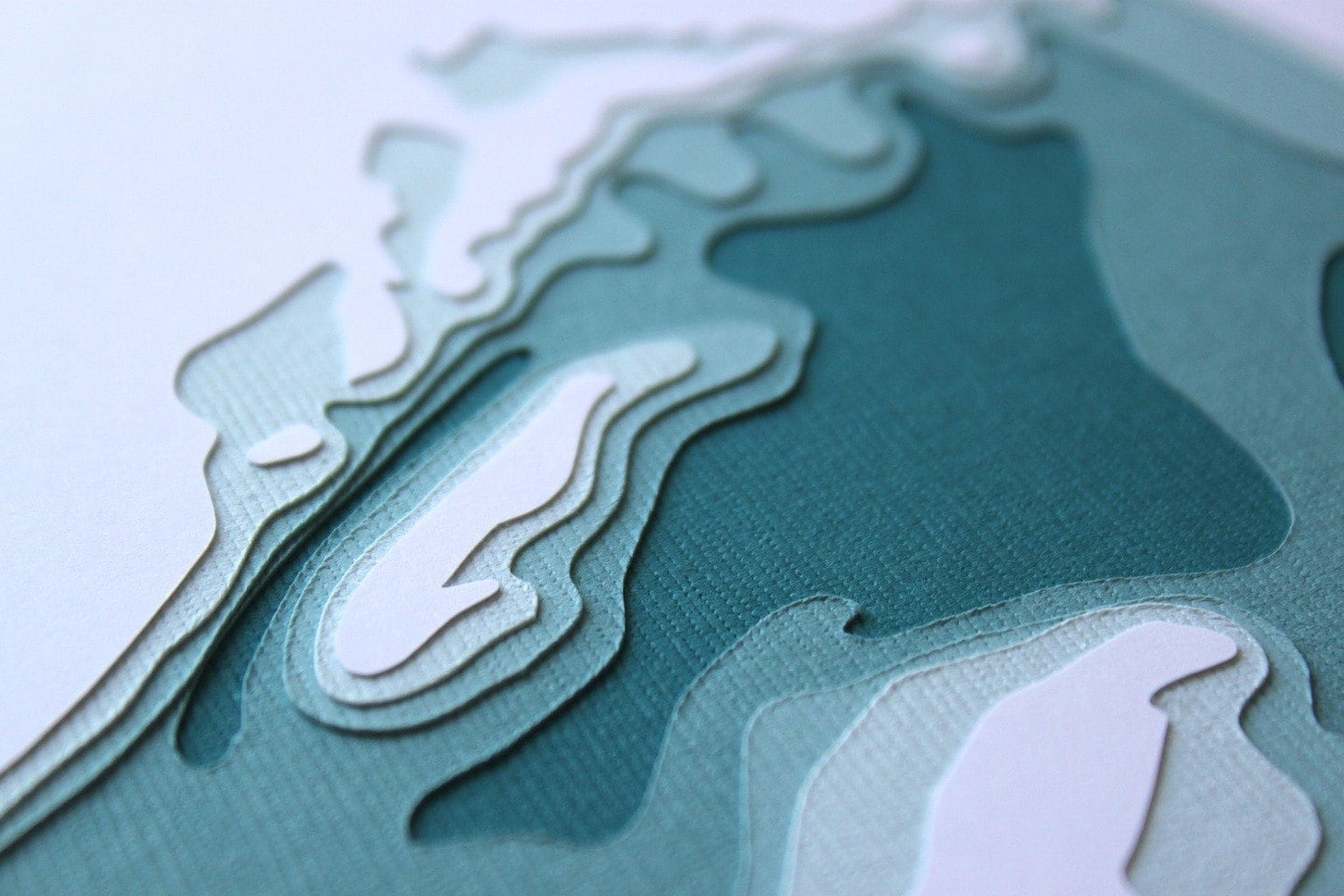Artist’s statement by Marnie Karger:
If you’ve ever looked at a map of the state of Minnesota you’ll find it hard to miss the famed 10,000 lakes. They are peppered across the land -- water-filled scars from ancient glaciers. Pristine reminders that this land was once covered in ice a mile thick. They are named after French voyageurs, early politicians, topographical characteristics, and descriptive translations of the Chippewa language. This is where I grew up, and this is what inspires my work.
I could spend hours poring over topographical maps of lakes and the land that surrounds them. I imagine myself in a silent canoe, floating over clear water that deepens steeply into blue-green mysteries. The image concurrently scares and amazes me. When I create my topo pieces, I am, in essence, creating a fictional landscape. I ponder questions as I cut layers of cardstock: What will the water do here around this peninsula? What would this tiny yet deep pond look like from the edge? Would stealthy pike gather in this area? Although they are inspired by maps, the pieces allude to many other images as people have commented that the pieces remind them of amoebas, spilled substances, oil on water, and other abstract forms.
I start by cutting what becomes the top layer of cardstock (usually white or cream). Sometimes I employ a map of a chain of lakes for reference and other times I just let the blade go where it will. I apply an archival adhesive tape to this piece, especially on the thin juts of land and around great curving bodies of water, and then add the first and lightest piece of colored cardstock. I repeat the process with two more pieces of colored cardstock before adding the last, uncut layer in the darkest color of the set. I use a teeny tiny swivel blade for most of the cuts and follow up with a sharp straight blade to clean up any cut outs that struggled to separate.
During the time I spend cutting and layering each piece, I see the work take shape and become complete. When it is done, it is often as if the shapes and depths were there all along and I have merely excavated the site.
To view more of Marnie work go to http://www.etsy.com/shop.php?user_id=5373376
----------------------------
If you are a crafter and would like to share your work on this blog let me know. You do not need to have a blog of your own . . . if you want to email me photos I can post them that way also.
----------------------------
If you are a crafter and would like to share your work on this blog let me know. You do not need to have a blog of your own . . . if you want to email me photos I can post them that way also.



No comments:
Post a Comment